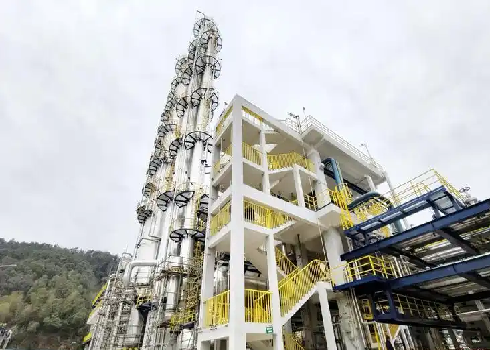
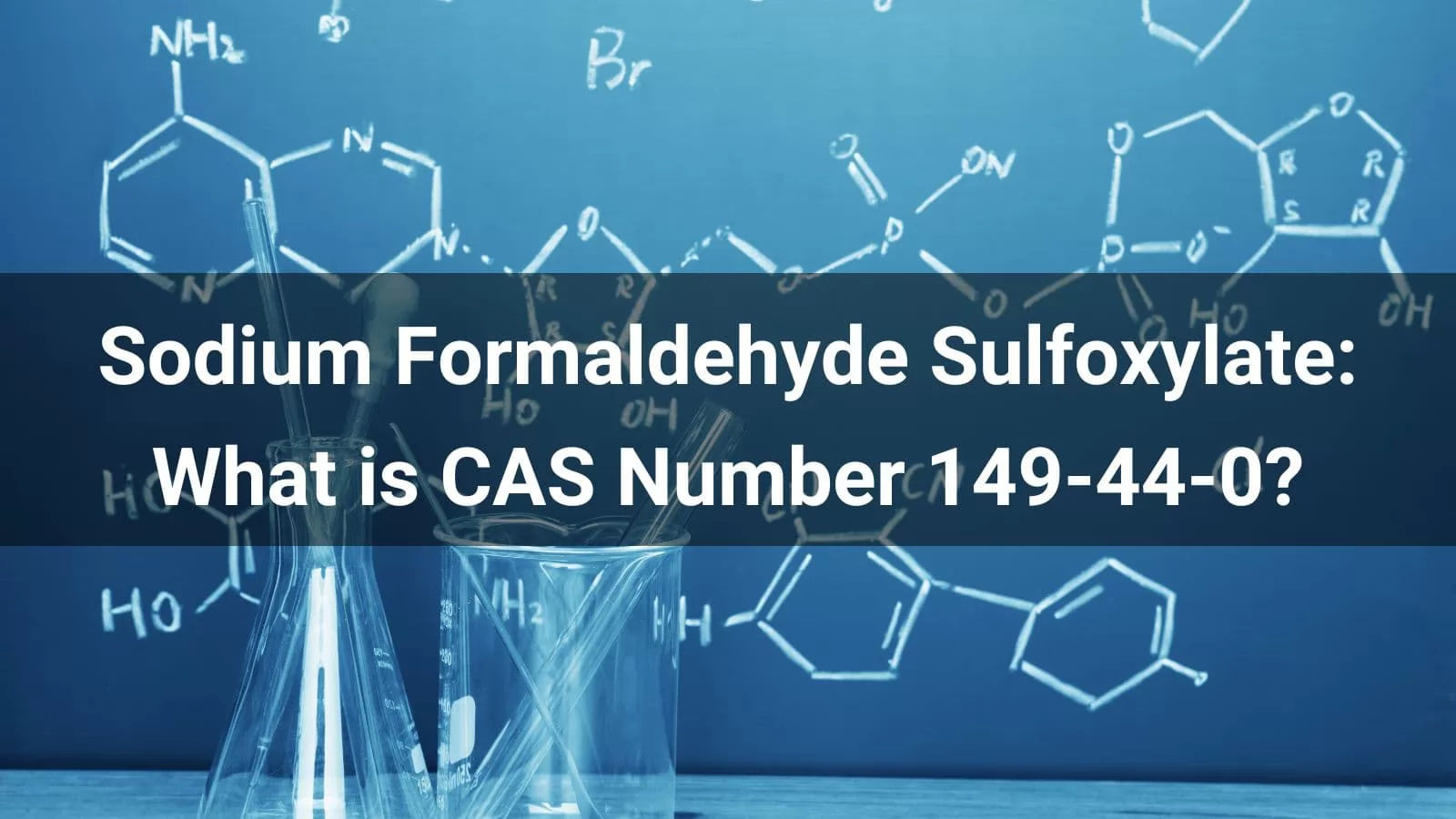
In the world of chemistry, every substance is identified by a unique CAS Number. This is done using a system called the Chemical Abstracts Service (CAS) number.
Today, we will delve into CAS Number 149-44-0, known as Sodium Formaldehyde Sulfoxylate. This compound serves as a crucial chemical intermediate and is widely used across various sectors, including dye production, chemical formulations, and pharmaceuticals. Its unique properties make it invaluable in these applications.
If your business requires Sodium Formaldehyde Sulfoxylate, we also recommend a manufacturer who provides high-quality products and excellent customer service to meet your specific needs.
In the intricate and vast landscape of chemistry, precision and specificity are paramount. This is where the Chemical Abstracts Service (CAS) Registry System comes into play, offering a unique and universal identifier for chemical substances known as the CAS Number. A CAS Number is a unique numerical identifier assigned to each chemical substance, polymer, and mixture, providing a reliable way to search for and identify chemicals unambiguously.
A CAS Number, formally known as a CAS RN (Registry Number), is a unique identifier assigned by the Chemical Abstracts Service, a division of the American Chemical Society. Each CAS number corresponds to a single chemical entity, which can include organic and inorganic compounds, polymers, biological sequences and other substances. Since 1965, the CAS has been assigning these numbers to new and existing chemical compounds to ensure that each substance can be accurately and uniquely identified. This system is crucial for scientists, researchers, manufacturers, and regulators worldwide, as it facilitates the exchange of information about chemical properties, hazards, and uses.
Understanding the role of CAS Numbers is essential for anyone working with chemicals, whether in a laboratory setting, in the production of consumer goods, or in the regulation of chemical safety. As we explore the specific properties and applications of CAS Number 149-44-0, Sodium Formaldehyde Sulfoxylate, recognizing the importance of this unique identifier will provide a solid foundation for our discussion.
CAS Number 149-44-0 refers to the chemical substance Sodium Formaldehyde Sulfoxylate, an organic compound primarily utilized as a reducing agent in various industrial applications. It appears as a white crystalline powder that is soluble in water.
The chemical formula of Sodium Formaldehyde Sulfoxylate is CH3NaO3S. This compound features a formaldehyde group linked to a sulfoxylate moiety, which endows it with its reactivity and effectiveness as a reducing agent.
Sodium Formaldehyde Sulfoxylate is crucial in the chemical industry, serving as a raw material and intermediate in several processes. It is commonly used in the textile industry for dyeing, where it helps improve dye uptake and achieve desired colors. Additionally, it finds applications in electroplating, enhancing the quality of metal coatings, and in the paper industry for decolorizing waste effluents and brightening paper products.
Moreover, due to its effectiveness as a reducing agent, Sodium Formaldehyde Sulfoxylate plays a significant role in organic synthesis, facilitating reactions that convert higher oxidation states to lower ones. Its versatility and utility in manufacturing processes across multiple sectors highlight its importance in both industrial and consumer product applications.
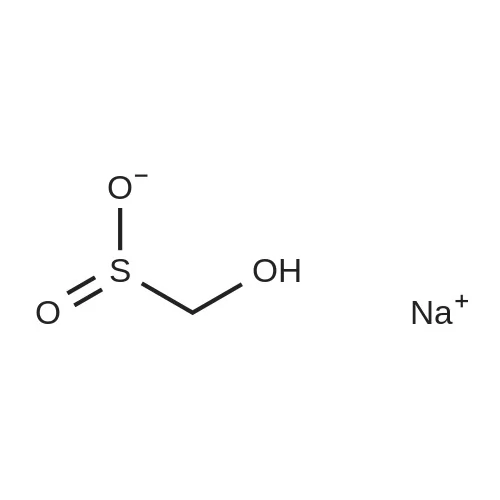
Sodium Formaldehyde Sulfoxylate, with the CAS Number 149-44-0, exhibits a range of physical and chemical properties that are crucial for its applications in various industries. Here is a detailed overview:
Sodium Formaldehyde Sulfoxylate's physical and chemical properties make it valuable in various industries, particularly in textile dyeing, electroplating, and organic synthesis, as outlined previously. Its solubility in water and reducing capabilities allow for effective use in processes that require reduction reactions.
|
Property |
Description |
|
Chemical Formula |
CH3NaO3S |
|
Molecular Weight |
118.10 g/mol |
|
Appearance |
White crystalline powder |
|
Odor |
Slightly pungent |
|
Solubility |
Soluble in water; insoluble in organic solvents |
|
Melting Point |
Approximately 70–80°C (decomposes upon heating) |
|
Density |
Approximately 1.75 g/cm³ (dihydrate) |
|
pH |
Slightly acidic when dissolved in water |
|
Stability |
Stable under normal conditions; may decompose upon exposure to heat or strong acids |
|
Reducing Agent |
Functions as a strong reducing agent, capable of converting higher oxidation states to lower ones in chemical reactions |
|
Reactivity |
Reacts with oxidizing agents; should be handled away from strong acids and bases to prevent unwanted reactions |
The production of Sodium Formaldehyde Sulfoxylate typically involves the following steps:
1. Raw Materials Preparation
Formaldehyde: Usually in aqueous solution (37-40% concentration).
Sodium Bisulfite (NaHSO₃): This compound acts as a reactant in the synthesis process.
2. Reaction
Mixing: The formaldehyde solution is mixed with sodium bisulfite in a reactor vessel. The reaction is typically conducted at controlled temperatures (generally between 25°C to 60°C) to promote effective interaction between the two reactants.
Formation of Intermediate: During this stage, formaldehyde reacts with sodium bisulfite to form sodium formaldehyde bisulfite as an intermediate.
3. Reduction Reaction
Sodium Formaldehyde Sulfoxylate Formation: The intermediate then undergoes a reduction process, often facilitated by heating or adjusting pH, to yield Sodium Formaldehyde Sulfoxylate.
4. Purification
Crystallization: The reaction mixture is cooled, allowing Sodium Formaldehyde Sulfoxylate to crystallize out.
Filtration: The solid product is separated from the liquid phase through filtration.
Washing: The crystals are washed with water to remove any unreacted materials or by-products.
Drying: The product is then dried to achieve the desired moisture content and obtain a pure crystalline form.
5. Quality Control
Testing: The final product undergoes quality control tests to ensure it meets the required specifications for purity, appearance, and other physical and chemical properties.
6. Packaging and Storage
Packaging: Sodium Formaldehyde Sulfoxylate is then packaged in suitable containers for distribution and storage.
Storage Conditions: It should be stored in a cool, dry place, away from incompatible substances, to maintain stability.
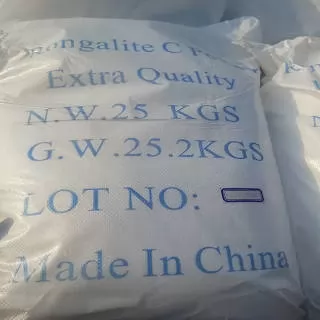

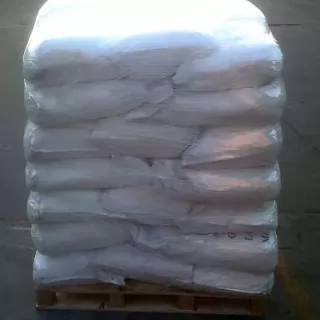
Sodium Formaldehyde Sulfoxylate (SFS), with the CAS Number 149-44-0, has a variety of industrial applications due to its unique properties as a reducing agent. Here are some of its key uses:
1. Textile Industry
Dyeing Processes: SFS is used as a reducing agent in the textile industry, particularly for vat dyeing processes. It serves as a bleaching agent for textiles, helping to remove unfixed dyes and improve the brightness and color of fabrics.
2.Rubber Industry
In the rubber industry, SFS is used as an activator in the production of synthetic rubber, such as styrene-butadiene rubber (SBR). It helps to accelerate the polymerization process and improve the properties of the final rubber product.
3.Organic Synthesis
Chemical Reactions: Functions as a reducing agent in various organic synthesis processes, allowing for the conversion of higher oxidation states to lower ones. It is used in the preparation of various chemicals and pharmaceuticals.
4.Paper Industry
Decolorization: Utilized in the treatment of waste effluents from paper manufacturing, facilitating the decolorization of effluents and contributing to environmental sustainability.
Brightness Enhancement: Used in the paper-making process to improve the brightness and quality of the final paper products.
5.Food Industry
Although its use is prohibited due to health risks, SFS has been illegally used as a food additive for bleaching purposes and to improve the tenderness of foodstuffs. It is important to note that the decomposition products of SFS, such as formaldehyde and sodium bisulfite, are serious threats to human health.
These applications highlight the versatility of SFS in different industrial sectors. However, it is crucial to adhere to safety and regulatory standards, especially in industries where human health is a concern, such as the food industry.
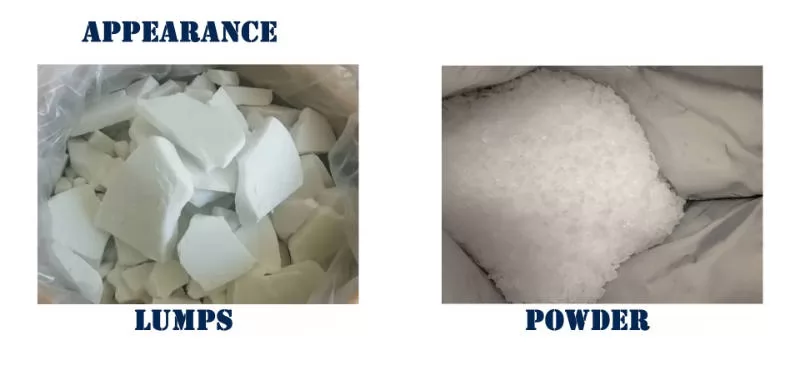
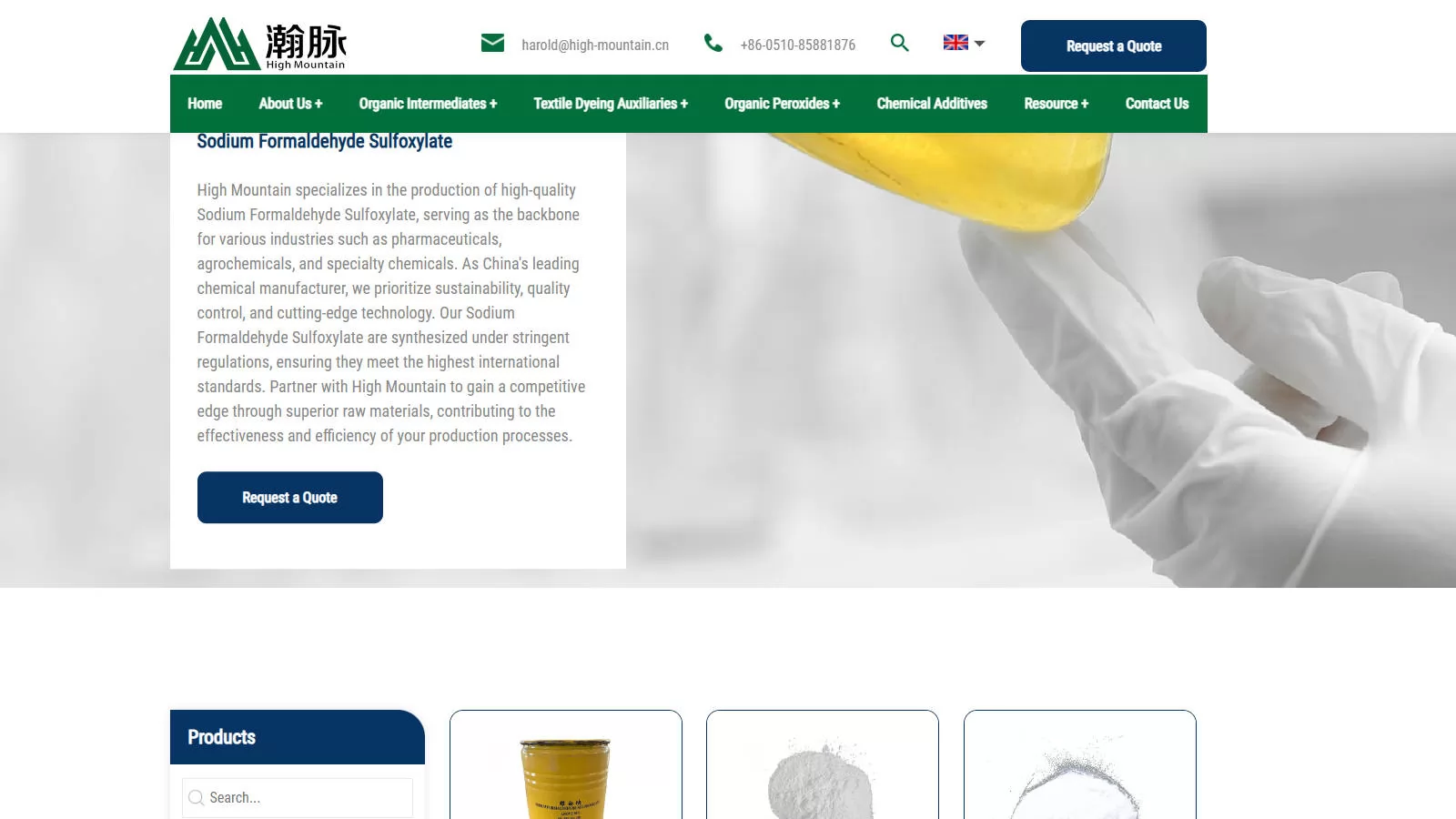
Choosing High Mountain Chem as your manufacturer for Sodium Formaldehyde Sulfoxylate guarantees access to high-quality products, competitive pricing, and dedicated support. Their expertise in the chemical industry, coupled with a commitment to excellence, positions them as a leading choice for businesses looking to enhance their product offerings and operational efficiency.
If you have any questions or need assistance, don’t hesitate to contact them.
In conclusion, Sodium Formaldehyde Sulfoxylate (CAS Number 25340-17-4) is a vital compound in the chemical industry, contributing to various sectors through its reducing properties and diverse applications. Its role in enhancing product quality, supporting environmental sustainability, and facilitating cost-effective manufacturing underscores its importance in modern chemical processes.
Ready to elevate your processes? Visit HighMountain Chem's website to discover how our premium Sodium Formaldehyde Sulfoxylate solutions can empower your business.






